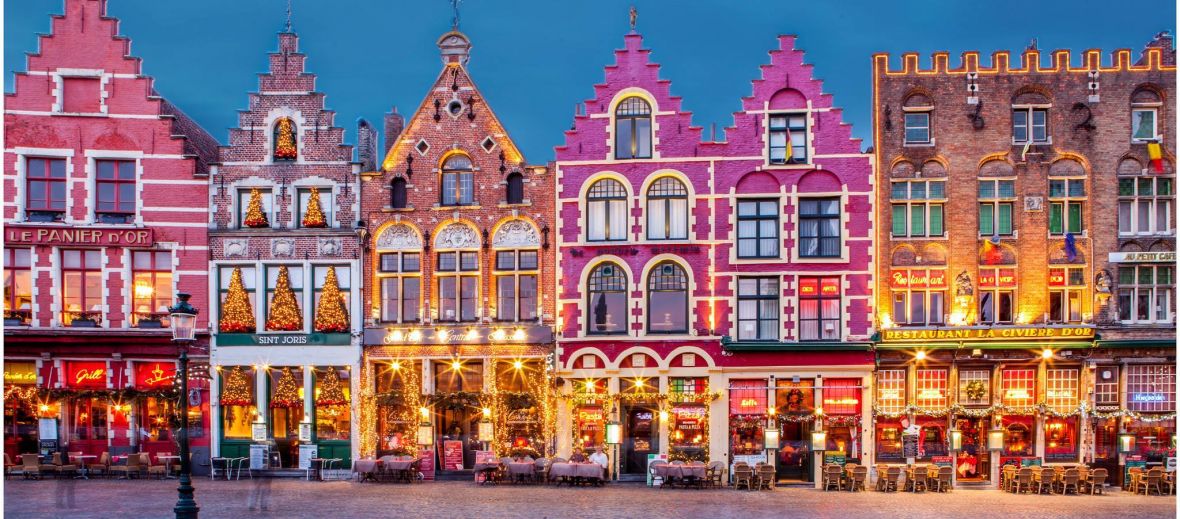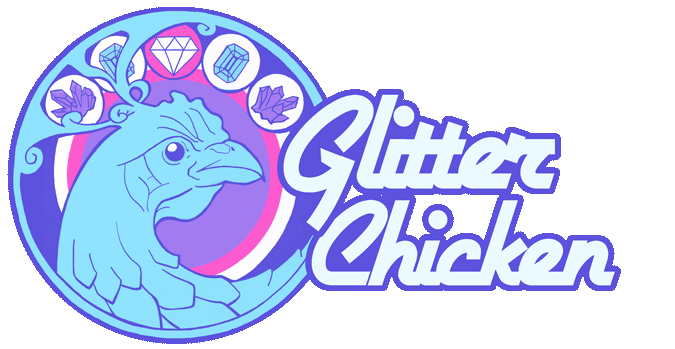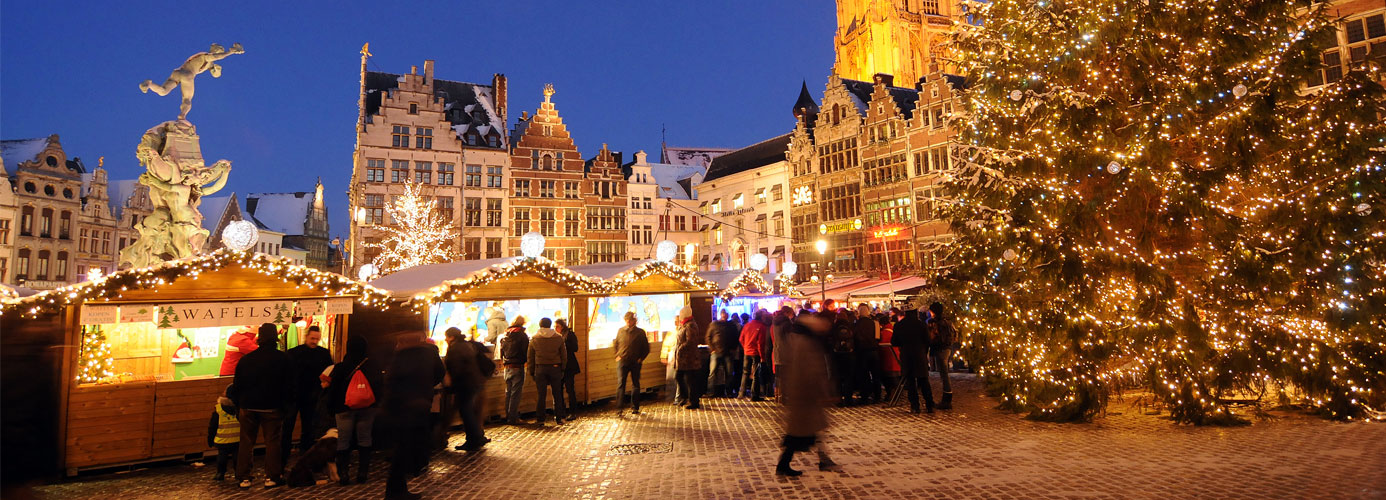Bruges Christmas Market
 Sweet and spicy aromas emanate from the dainty little huts shaped like gingerbread houses festooned with seemingly endless strings of twinkling lights. Ice skaters glide past couples sipping hot chocolate. Cheerful music fills the air. Did you step inside a snow globe? Are you starring in a Hallmark movie? No, you’re at the Christmas market in Bruges, Belgium.[1]
Sweet and spicy aromas emanate from the dainty little huts shaped like gingerbread houses festooned with seemingly endless strings of twinkling lights. Ice skaters glide past couples sipping hot chocolate. Cheerful music fills the air. Did you step inside a snow globe? Are you starring in a Hallmark movie? No, you’re at the Christmas market in Bruges, Belgium.[1]
Although it looks like Snow White and the Seven Dwarves might live in these huts, they are actually temporary shops set up by vendors offering a wide selection of tasty treats and holiday gift items. You can find Christmas decorations, handmade figurines, hats and scarves and other accessories next to local produce. Food and beverage options are plentiful. Burgers, smoked wurst, and fried coconut are big sellers as well as the stuff Belgians are famous for - waffles, beer and chocolate! You can’t miss the vendor huts surrounding the spectacular ice rink in the Grote Markt (known as Market Square in English) but don’t forget that there are more huts in Simon Stevinplein. This is also where you will find the restaurant Poules Moules, which consistently serves up the best mussels in town.[2] It’s traditional to eat them straight out of the pot with a side of frites, known to Americans as French fries although the Belgians claim to have invented them.[3]
Christmas markets are not uniquely Belgian though. They can be found all over Europe and even in the U.S., but they originated in Germany, the country that pretty much invented Christmas as we know it back in the 1300s.[4] The Holy Roman Empire, which included the eastern borders of France, quickly got into the spirit. Christmas markets were traditionally set up at the start of advent and lasted for the duration of the 4 weeks of advent to bring some much-needed cheer to villagers laboring through the long dark winter nights.[5] They evolved into gift shops after Martin Luther suggested that children should receive presents from “The Christ Child” or Christkindl. That’s why Christmas markets are called Christkindlmarkt.[6]
While most of the Austrian and German Christmas markets still close a day or two before Christmas, the Bruges Christmas market lasts from November 23, 2018 all the way through January 1, 2019, which is an ideal time span for American tourists. It’s a popular pastime among European tourists to check out Christmas Markets in other nations and compare them to their own with everyone competing for the unofficial title of best market.[7]
What’s so special about the Bruges Christmas market? Certainly not its size or the quality of its items, which are average, not remarkable. Definitely not its prices, which are high. The magic is in the location – Bruge’s cobblestone streets and picturesque medieval architecture with the towering belfry at its southern tip looks like something straight out of the pages of a fairy tale. The exuberant Flemish culture is a lesser known delight. When evening rolls around, the Christmas market transforms into an outdoor party scene, with DJ’s spinning tunes and locals and tourists mingling and dancing up a storm. When we visited, local young people were playing a drinking game called Nallen that involves hammering nails into a tree stump.[8] They took a break to form a conga line when they discovered a British couple was celebrating a birthday, snaking through the tables scattered around the square close to the food trucks serving beer, hot chocolate, and my personal favorite – Glühwein!!
The Romans were the first people in recorded history to heat up red wine and add spices. As the legions traveled across Europe conquering and trading, they brought their viticulture and recipes with them so now every European country has its own version of this winter warmer that's sold outdoors in the colder months and has become a staple in Christmas markets around the world. In Germany, it's called glühwein. In France, it's vin chaud. It’s gløgg in Norwegian and Danish, glögg in Swedish and Icelandic, and glögi in Finnish and Estonian. In the U.K., it's simply known as mulled wine. Each version uses a slightly different combination of spices but the most commonly used ones are orange peel, lemon peel, cinnamon, nutmeg, star anise, cloves, cardamom, and ginger. In some countries, they boil the combined spices in a sugar syrup before red wine is added and heated. Sometimes orange slices are thrown in before the heating occurs or the drink is served with orange slices as a garnish. Variations include the addition of brandy or ginger wine. Mulled wine is traditionally served in small porcelain or glass mugs. At the Bruges Christmas market, they serve glühwein in little souvenir mugs. For an extra 2 euro, you can keep the mug. I highly recommend that you do this. Mine says “Brugge Christmas Market” along with a drawing of Santa’s sleigh guided by swans instead of reindeer.[9] Every time I cozy up by the fire with mulled wine in this little mug, I’m transported back to this glorious place. I guarantee you’ll feel the same way too.[10]
[1] Locals call the town by its Flemish name Brugge but the French name Bruges is more widely known.
[2] Poules Moules literally means “Hens and Mussels.” Check out the glowing reviews from locals and tourists alike at https://www.tripadvisor.com/ShowUserReviews-g188671-d1058117-r147104881-Poules_Moules-Bruges_West_Flanders_Province.html
[3] The Belgians take this claim so seriously that they have petitioned UNESCO to endorse the fry as an icon of Belgian cultural heritage. https://nypost.com/2018/08/06/france-belgium-argue-over-who-really-invented-french-fries/
[4] For more about the Germanic origins of our Christmas traditions, see https://www.irishtimes.com/news/world/europe/santa-claus-is-real-and-he-s-as-german-as-christmas-itself-1.2476673
[5] The precursor to Christmas Markets was Vienna’s Dezembermarkt dating from 1296 when Emperor Albrecht I allowed shopkeepers the right to set up open-air markets so that villagers could stock up on supplies to last them through the bitter cold months but it is widely believed that Dresden’s Strietzelmarkt was the first real Christmas Market, dating from 1434. Although Dresden was reduced to rubble when the Allies bombed it during WWII, it boasts a lovely Christmas market once again. See http://www.dresden.de/en/tourism/attractions/events/dresden-christmas-markets.php
[6] If you’ve ever wondered where the tradition of giving gifts to children at Christmas comes from, look now you know). https://christkindlmarktleavenworth.com/about/
[7] Condé Nast published this list of the best Christmas Markets in Europe https://www.cntraveler.com/gallery/best-christmas-markets-in-europe but it does not include the market in the city of Bath, England, which ranks high on most lists. See https://bathchristmasmarket.co.uk/
[8] I’m not sure if its spelled Nallen, Naalen, or Nahellen. I tried looking it up but can’t find it anywhere. I did discover that a similar game called Hammerschlagen is played in Germany, which is called Stump in the U.S., where it's popular among college students in rural areas like Penn State. I won't insert a link telling you how to play it because I wouldn’t want to encourage you to do something so ridiculously dangerously idiotic. But I must admit it did look fun.[9] Bruges is pretty much overrun by swans, so the birds have become symbolic of the town. Better than pigeons, I guess.
[10] This recipe for mulled wine comes from an enthusiastic American who is instantly transported back to the Christmas market in France where she had her first sip of vin chaud. https://www.wellplated.com/spiced-wine/. No need to go through all that trouble, though. You can purchase a lovely blend of mulling spices from a trusted source such as Halladay’s Harvest Barn in Vermont. See https://www.halladays.com/cider-mulling-263/

